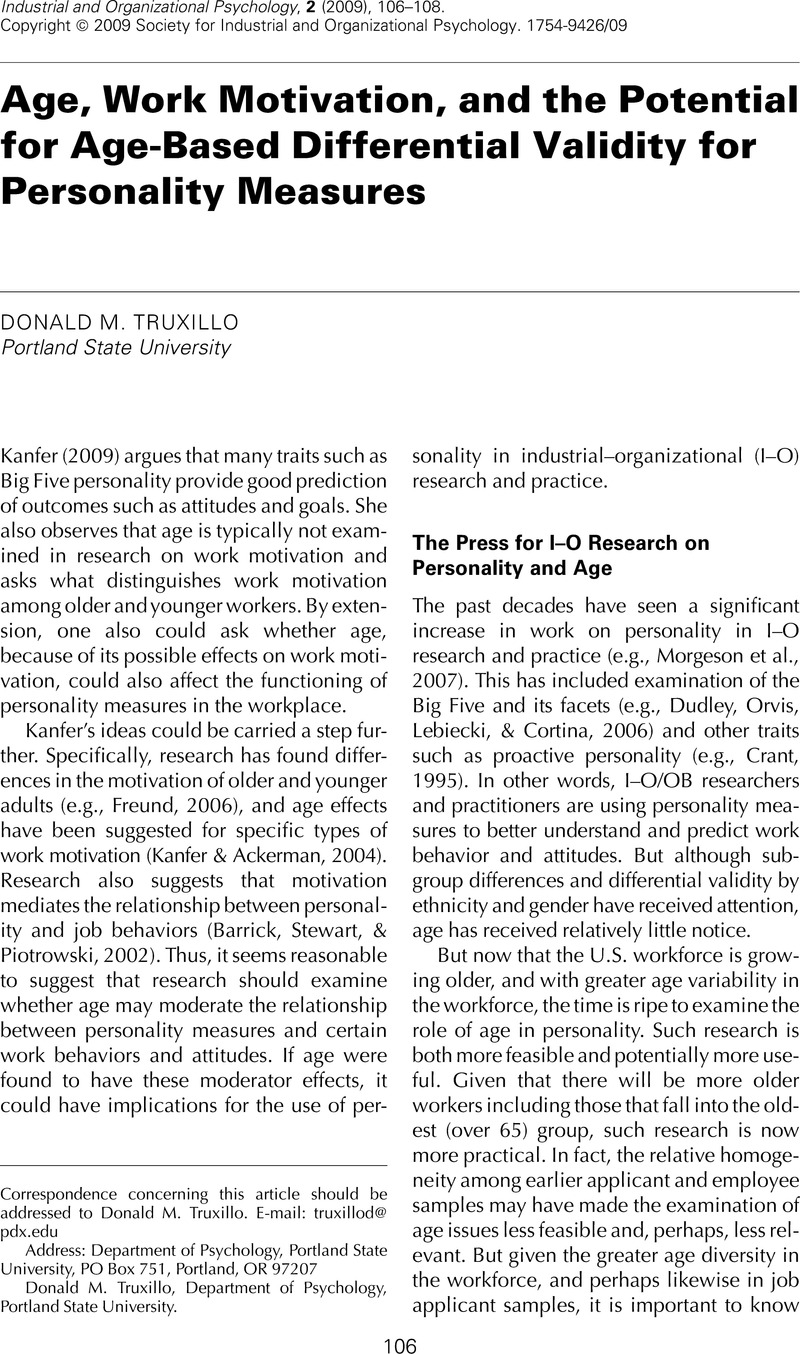Crossref Citations
This article has been cited by the following publications. This list is generated based on data provided by Crossref.
Kanfer, Ruth
2009.
Work Motivation: Advancing Theory and Impact.
Industrial and Organizational Psychology,
Vol. 2,
Issue. 1,
p.
118.
Hertel, Béatrice I.J.M. van der Hei, Guido
Boone James, Jacquelyn
McKechnie, Sharon
Swanberg, Jennifer
and
Besen, Elyssa
2013.
Exploring the workplace impact of intentional/unintentional age discrimination.
Journal of Managerial Psychology,
Vol. 28,
Issue. 7/8,
p.
907.
Bamberger, Peter A.
and
Bacharach, Samuel B.
2014.
Predicting Retirement Upon Eligibility: An Embeddedness Perspective.
Human Resource Management,
Vol. 53,
Issue. 1,
p.
1.
Truxillo, Donald M.
Fraccaroli, Franco
Yaldiz, Lale M.
and
Zaniboni, Sara
2017.
The Palgrave Handbook of Age Diversity and Work.
p.
447.
Snelgar, Robin
Shelton, Stacy A.
and
Giesser, Anne
2017.
A comparison of South African and German extrinsic and intrinsic motivation.
South African Journal of Economic and Management Sciences,
Vol. 20,
Issue. 1,
Fisher, Gwenith G.
Truxillo, Donald M.
Finkelstein, Lisa M.
and
Wallace, Lauren E.
2017.
Age discrimination: Potential for adverse impact and differential prediction related to age.
Human Resource Management Review,
Vol. 27,
Issue. 2,
p.
316.



